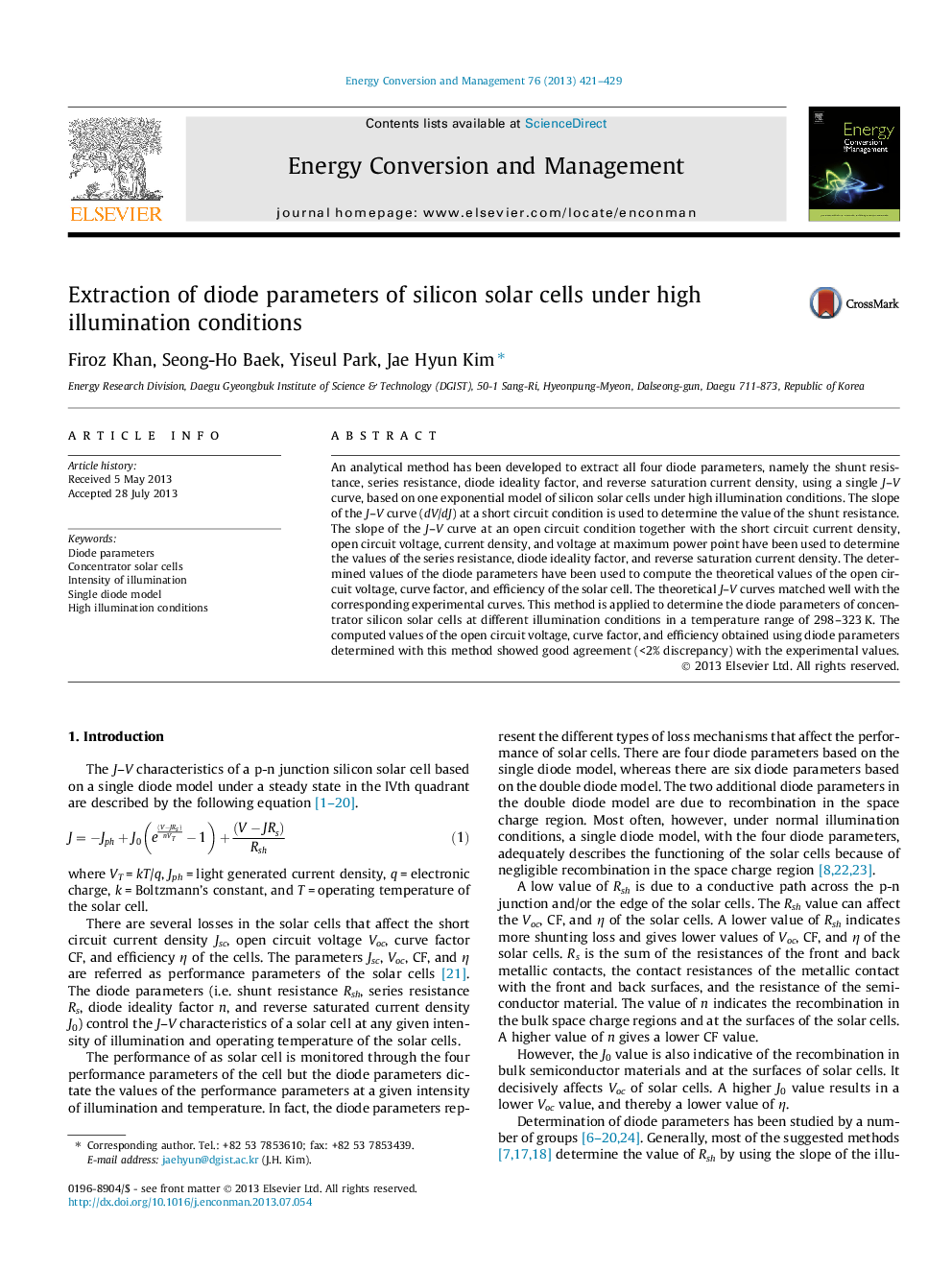| Article ID | Journal | Published Year | Pages | File Type |
|---|---|---|---|---|
| 760799 | Energy Conversion and Management | 2013 | 9 Pages |
•An analytical method to extract the diode parameters of concentrated Si solar cells.•This method uses single I–V curve under high illumination conditions.•The theoretical values of performance parameters have been computed.•Theoretical values of parameters matched within 2% discrepancy limit.•This method gives best results among the methods used in this work.
An analytical method has been developed to extract all four diode parameters, namely the shunt resistance, series resistance, diode ideality factor, and reverse saturation current density, using a single J–V curve, based on one exponential model of silicon solar cells under high illumination conditions. The slope of the J–V curve (dV/dJ) at a short circuit condition is used to determine the value of the shunt resistance. The slope of the J–V curve at an open circuit condition together with the short circuit current density, open circuit voltage, current density, and voltage at maximum power point have been used to determine the values of the series resistance, diode ideality factor, and reverse saturation current density. The determined values of the diode parameters have been used to compute the theoretical values of the open circuit voltage, curve factor, and efficiency of the solar cell. The theoretical J–V curves matched well with the corresponding experimental curves. This method is applied to determine the diode parameters of concentrator silicon solar cells at different illumination conditions in a temperature range of 298–323 K. The computed values of the open circuit voltage, curve factor, and efficiency obtained using diode parameters determined with this method showed good agreement (<2% discrepancy) with the experimental values.
Graphical abstractWe have developed an analytical method to determine the diode parameters of concentrator solar cells under high illumination conditions. The determined values of diode parameters have been used to compute the theoretical values of performance parameters. The computed values of the open circuit voltage, curve factor, and efficiency obtained using diode parameters determined with this method showed good agreement (<2% discrepancy) with their experimental values in the temperature range 298–323 K.Figure optionsDownload full-size imageDownload as PowerPoint slide
